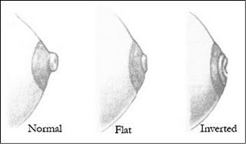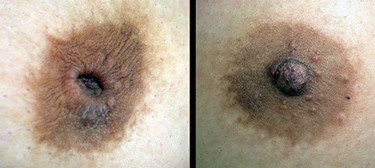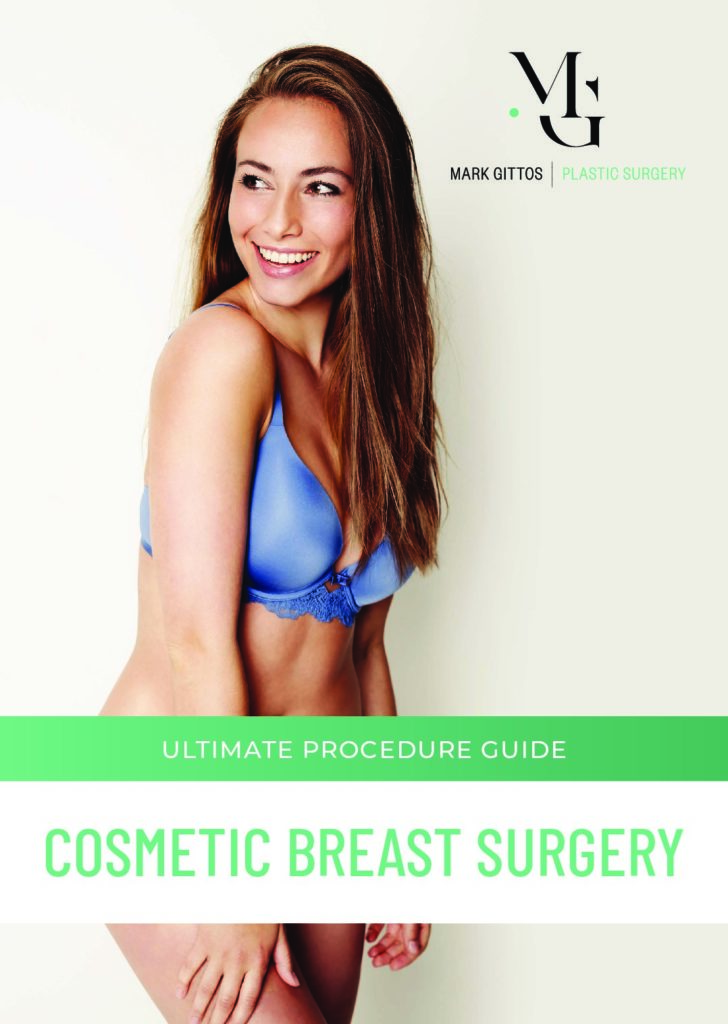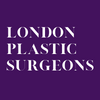Inverted Nipple Surgery & Nipple Correction in London UK by Mr Mark Gittos Plastic Surgeon
What is an Inverted Nipple?

An inverted nipple is a condition in which the nipple ducts are shorter than normal. This happens when the nipples are pulled inwards causing the nipple to lie flat against the breast. It occurs in about 2% of women and also rarely in some males. An inverted nipple is usually caused by a congenital anomaly but can also be due to scarring from breast-feeding, infection in the ducts, or previous breast surgery. Inverted nipples can cause functional problems such as inflammation, rashes, and pain. In some cases, it may also prevent the ability to breastfeed.
What is Inverted Nipple Surgery?

Inverted nipples surgery is a cosmetic surgical procedure that improves the projection of one or both of the nipples enhancing the appearance of your breast while also preserving the sensitivity of the nipple. There are two techniques for inverted nipple surgery: either Leaving the milk ducts intact or Dividing the milk ducts
Watch Mr Gittos explain Nipple Correction and Inverted Nipple Surgery
Grades of Nipple Inversion
Depending on the severity there are THREE grades of nipple inversion. They are:
- Grade 1: In grade 1 nipple inversion, the nipple is inverted under the areola but can be maneuvered to project, however it will return to its inverted state within a few minutes. In such cases, breastfeeding is usually possible. Unless the inverted nipples are affecting your confidence and self-esteem, corrective surgery is usually not required.
- Grade 2: In grade2, the nipple is inverted under the areola and can only be forcefully maneuvered to briefly protrude. Breastfeeding may be possible and correction surgery is performed on the milk ducts.
- Grade 3: In grade 3, the nipple will remain inverted even with vigorous manipulation. The nipple remains buried in the areola, and surgery is required to rebalance the muscle pull.
Can Inverted Nipple Correction help?
You are an ideal candidate for inverted nipple correction surgery if:
- You are in a good state of healthy
- You have a stable weight.
- You have realistic expectations.
- Your breasts are completely developed.
- There is a significant difference in the projection of your nipples.
- You have a congenital abnormality affecting nipples.
- Your ability to breastfeed has been affected because of nipple inversion.
- You are unhappy with the appearance of your nipples.
- You have had an undesired result from your previous surgery.
- You are a non-smoker or are willing to give up smoking.

Benefits of inverted nipple surgery
Benefits of nipple correction include:
- Improving nipple appearance.
- Reduce inflammation and infections of the nipple.
- Improving your sexual life.
- Increased self-confidence.
- Improves quality of life.
Download Mr Mark Gittos’ Guide to Cosmetic Breast Surgery

Nipple Surgery Procedures
There are two techniques available for inverted nipple surgery. It can be done by:
Leaving the Milk Ducts Intact
This technique is also known as the “parachute flap” technique. The procedure is performed using a local anesthetic on the dark-skinned area of the breast called areola and an incision will be made. The nipple and areola tissue is carefully lifted while keeping it connected to the breast and stitched into a new, protruding shape utilizing a purse-string style of stitches. Scar contracture will actually increase rather than decrease nipple projection because of the circular shape of the scar around the nipple.
As the tethering of the milk duct is often the cause of inverted nipples, this procedure has a significantly higher recurrence and relapse rate. It is highly likely that women undergoing this procedure will be able to breastfeed because some of the milk ducts will remain attached and you shouldn’t experience a change in nipple sensation.
If the procedure is not being combined with other breast surgeries, it usually takes only about one hour to complete.
Dividing the Milk Ducts
This procedure is much more preferred and may be necessary in more complicated cases. Local anesthesia will be applied at the nipple base before an incision is made. All the milk ducts will be detached, which will allow reshaping of the nipples to give a natural-looking projection. The incision is sutured closed and medicated gauze is applied to the site.
This surgery typically takes only an hour to complete unless it is combined with other cosmetic surgical procedures and you should be able to return home within a few hours of the surgery.
You shouldn’t experience a change in nipple sensation but you won’t be able to breastfeed because of the complete removal of the milk ducts.

Recovery after Nipple Correction
The speed of recovery varies from person to person depending mostly on your health and your body’s healing process. Recovery from inversion nipple surgery is usually very rapid. As there is minimal pain or swelling associated with the procedure you can return to work and most activities within a few hours after the surgery itself. The sensation of the breasts and nipples will be normal immediately after the procedure or will return to normal completely after a few days. Waterproof dressings will be applied to keep the wounds dry and clean and the sutures will be removed after 14-21 days. Showers will be permitted a day after the surgery. You will be required to wear a protective dressing that contains foam for up to four weeks to decrease the probability of re-flattening of your newly everted nipples.
You can expect to see the outcome of the procedure anywhere from between two to four weeks.
Risks and complications of Nipple Surgery
Every surgical Procedure poses a certain amount of risks, and you must understand these risks and possible complications associated with it before deciding if the surgery is right for you.
You will be thoroughly briefed about the possible complications before undergoing the procedure to ensure that you fully understand the potential risks associated. The risks and complication associated with inverted nipple surgery include:
- Bleeding from the incision site
- Infection
- Potential allergic reactions
- Discomfort, bruising, and soreness around the incision site
- In smokers and diabetic persons, healing is often slow
- Anesthetic risks including nausea, deep vein thrombosis, or cardiac and pulmonary complications
- A difference in the sensation of the breast and nipple
- Temporary or permanent loss of sensation around the operated site
- Inevitable scarring
- Difficulties while breastfeeding as well as a reduction in milk supply due to damage in the milk ducts. In some cases, even losing the ability to breastfeed
- A considerable difference in the size or projection of the nipples
- Undesired result
- Re-flattening of the nipples
- Subsequent surgery may be required to correct any faults
Your Inverted Nipple Correction Journey
Your Consultation
Consultation forms the first phase of your inverted nipple correction journey. Here you will have an in-depth discussion with your surgeon about the procedure to see if you meet the criteria to undergo the surgery. Your care provider will take a detailed medical history and enquire if you smoke, as smoking adversely affects your results following the surgery and you will be advised to avoid smoking for at least 3 weeks prior to surgery.
The severity of inversion will be graded, and you will be told about various available surgical options. The provider will also ask you about your goals for the procedure. Here it would help if you were honest and reasonable about your expectations. This can help you in getting your desired outcome. You will be explained the modality of the Procedure in full, along with the risks involved. You should be inquisitive as much as possible and ask if you have any queries or doubts.
You will be expected to not use aspirin or other blood-thinning to prevent excessive bruising during and after the procedure.
The Inverted Nipple Procedure
This is the second phase of your inverted nipple correction journey. There are two techniques available for inverted nipple surgery. In either surgery, the aim is to reshape the nipple and areola so that the nipple protrudes from the breast, improving the appearance of the breast while preserving the sensitivity of the nipple. They are:
- Leaving the Milk Ducts Intact
This technique is also known as the “parachute flap” technique. The procedure can be performed using a combination of local anesthetic on the dark-skinned area of the breast called areola and an incision will be made. The nipple and areola tissue is carefully lifted while keeping it connected to the breast and stitched into a new, protruding shape utilizing a purse-string style of stitches. Scar contracture will actually increase rather than decrease nipple projection because of the circular shape of the scar around the nipple.
As the tethering of the milk duct is often the cause of inverted nipples this procedure has a significantly higher recurrence and relapse rate. It is highly likely that women undergoing this procedure will be able to breastfeed because some of the milk duct systems will remain attached and you shouldn’t experience a change in nipple sensation.
If the procedure is not being combined with other breast surgeries, it usually takes only about one hour to complete.
- Dividing the Milk Ducts
This procedure is much more preferred and may be necessary in more complicated cases. Local anesthesia will be applied at the nipple base before an incision is made. All the milk ducts will be detached, which will allow to reshape the nipples to give a natural-looking projection. The incision is sutured closed and medicated gauze is applied to the site.
This surgery typically takes only an hour to complete unless it is combined with other cosmetic surgical procedures and you should be able to return home within a few hours of the surgery.
You shouldn’t experience a change in nipple sensation but you won’t be able to breastfeed because of the complete removal of the milk ducts.
Recovery after Inverted Nipple Surgery
The speed of recovery varies from person to person depending mostly on your health and your body’s healing process. Recovery from inversion nipple surgery is usually very rapid. As there is minimal pain or swelling associated with the procedure, you can return to work and most activities within a few hours after the surgery. The sensation of the breasts and nipples will be normal immediately after the procedure or will return completely after a few days.
Waterproof dressings will be applied to keep the wounds dry and clean.
Shower will be permitted a day after the surgery while the sutures will be removed after 14-21 days. You will be required to wear a protective dressing that contains foam for up to four weeks to decrease the probability of reoccurrence or flattening of your corrected nipples.
Expect to see the outcome of the procedure anywhere from between two to four weeks.
Download the FREE GUIDE to Breast Surgery
Click to DOWNLOAD Mr Mark Gittos Ultimate Guide to Cosmetic Breast Surgery
Associated procedures – Combining Inverted Nipple Surgery with Breast Surgery
Inverted nipple surgery can be performed either alone or in conjugation with breast augmentation, breast lift, breast reduction, and breast implant removal or implant replacement surgery.

Frequently Asked Questions about Inverted Nipple Surgery
Can you surgically fix inverted nipples?
- Yes, you can surgically fix your inverted nipples. The procedure is a cosmetic surgical procedure known as Inverted Nipple Surgery or Inverted Nipple Correction Surgery. The two main techniques to fix this condition are:
- Through partial preservation of the milk ducts.
- By detaching milk ducts.
How long does it take for inverted nipple surgery to heal?
- Recovery from inverted nipple surgery is very rapid. You can expect to resume most activities within 24 to 48 hours after surgery. You can expect to see the outcome of the procedure in two to four weeks.
Can Inverted nipples cause problems?
- In most cases, having an inverted nipple won’t affect you. But can cause the following problems:
- Difficulty while breastfeeding in some cases being unable to breastfeed.
- Can cause inflammation and infections of the nipple.
- Can decrease your sexual life.
- Can decrease your self-confidence.
What are inverted nipples caused by?
- Some of the common causes include:
- Congenital anomaly.
- Disease or trauma that caused inflammation pulling the nipple inwards.
- Aging.
- Side effects of previous breast surgery.
- Presence of a cyst in the breast or a benign breast tumor.
- Abscess in the subareolar region.
- Inflammation of breast tissue.
- Infection.
- Fat necrosis.
How much does inverted nipple surgery cost?
- Inverted nipple surgery can cost anywhere from $2000 to $4000. Medicare may cover a portion of the surgical cost if you fulfill its enlisted criteria and are not undergoing the surgery for purely cosmetic reasons. It is enlisted in Medicare item 31563.
Can I get my nipples pierced if I have inverted nipples?
Yes, you can have your nipples pierced if you have an inverted nipple because Nipple piercing is sometimes done to draw out inverted nipples. The jewelry worn in the piercing can help keep your nipple in an erect position.
Should I be worried about inverted nipples?
- No, there’s absolutely no reason you should be worried about inverted nipples. It is common in females and is also present in some males. It can be easily treated through a simple cosmetic surgical procedure known as Inverted Nipple Surgery.
Will inverted nipple correction surgery leave scars?
- Scars are an inevitable part of any surgery. Efforts will be made to keep them as inconspicuous as possible. The scars will gradually fade and are located in such a way as to become less noticeable over time.
Further Reading – Medical References
- Inverted Nipple Repair Revisited: A 7-Year Experience | Aesthetic Surgery Journal | Oxford Academic (oup.com)
- Nipple Enhancement for Inverted Nipples – Australian Society of Plastic Surgeons (plasticsurgery.org.au)
- Nipple Surgery & Areola Surgery in Melbourne – Coco Ruby Plastic Surgery
- Cosmetic procedures for the nipples and areolas | ASPS (plasticsurgery.org)
- Surgical Correction of Inverted Nipples (nih.gov)
